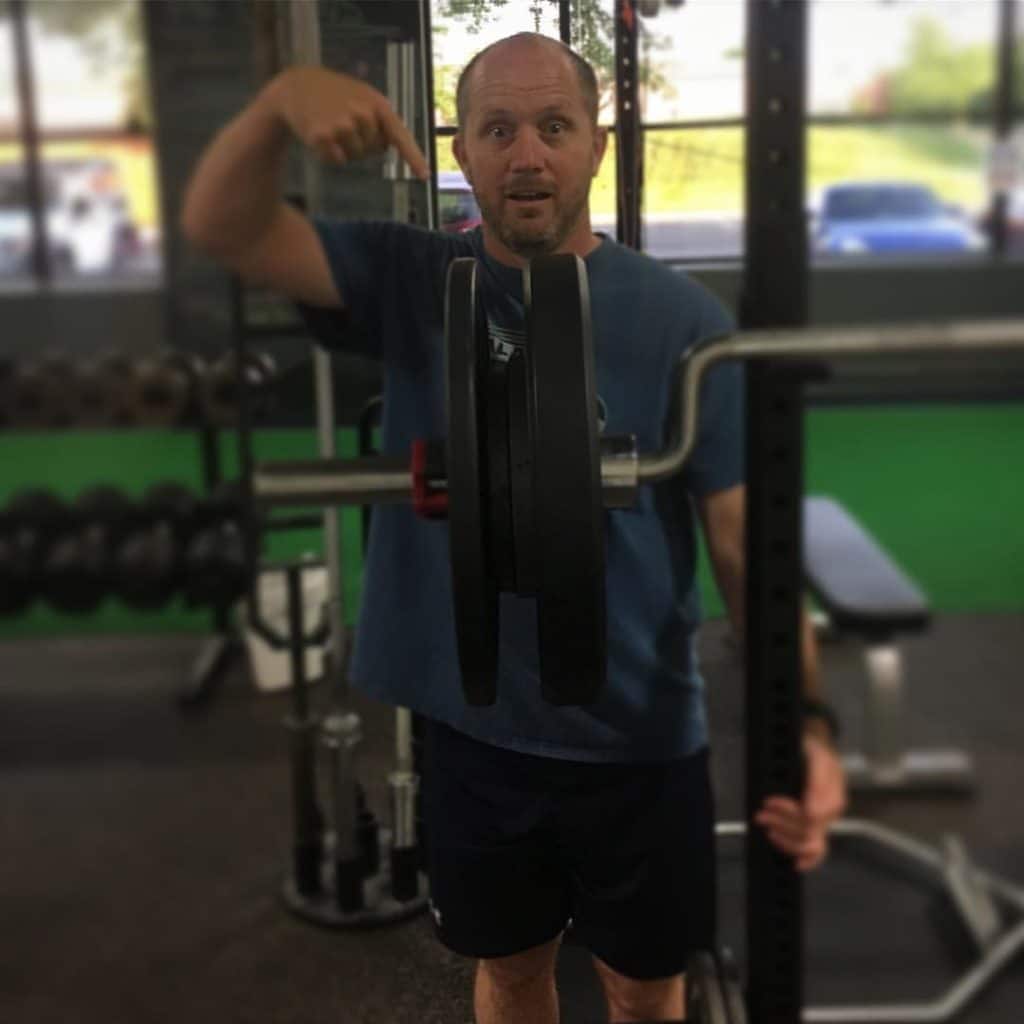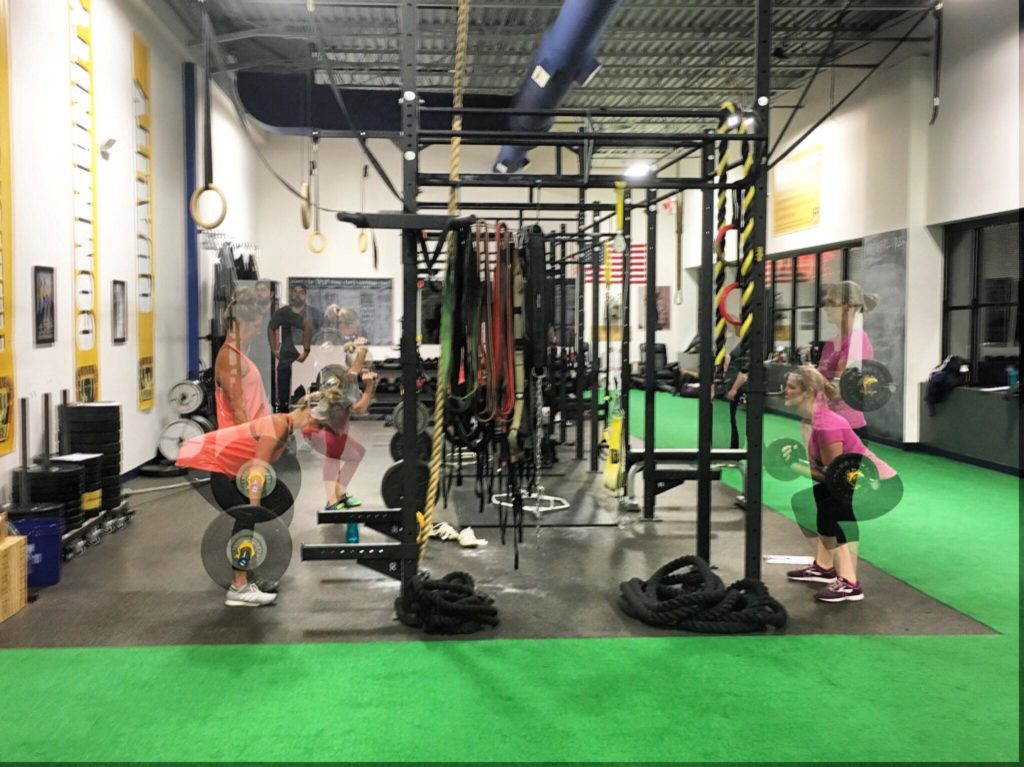“The simple things that lead to success are all easy to do. But they’re also just as easy not to do.” – Jeff Olson
The above quote rings true in every area of life, especially when it comes to seeing through results through our efforts in the gym. Want to gain more knowledge about something? Read 5-10 pages in a related book every day and see how much you learn. Want to get stronger? Start going to the gym consistently and do the right things over time.
It’s easy to hop in a car and go to the gym…but also easy not to do. When it comes to easy to overlook tasks in the gym, two things come to mind: writing down your weights each workout and selecting a focus each session.
Writing Down Your Weights Each Workout
So, why does it matter if we write down the weights we use each workout? Because I said so (kidding). Writing down our weights allows us to make good training decisions the following session and allows us to see progress over time.
What happens if you come in to train today, but you can’t remember your weight for deadlifts? Maybe you waste time trying to find a challenging weight again. Or, maybe you load it too heavy or too light. Either way, that’s not ideal. Why spend time figuring out the load you put on the bar last time instead of having already begun lifting?

What if you wrote down the weight from last time and know exactly what you did? Well, now we’re cooking (not literally, to be clear, it’s just a saying). Since we wrote our weights in, we know the weight that will probably be good to use today, or at least close to it depending on how we feel. This allows us to train with a higher intensity because our working sets will be an appropriate RPE from having a solid idea of what weight to use.
Below is a table to further illustrate my point made with my subpar Microsoft Word table building skills:
| Week 1 | Week 2 | Week 3 | Week 4 | |
| Person who tracks weight | 100,110,120 | 115,120,125 | 115,125,125 | 120,125,135 |
| Person who doesn’t track weight | 100,110,120 | 95,105,115 | 105,115,120 | 110,120,125 |
Table 1: Comparison of two individual’s weights (in pounds) used for 3 sets of deadlifts
Two things can be noted from looking at the table above. First, you’ll notice that both people’s weights are close to what coach Greg uses to deadlift when he does it twice a year (Just kidding, Greg…or am I?). Second, and more important, you can see that the person who tracked their weight ended up lifting heavier over time. The person who didn’t track weights wasn’t sure what they had used the previous workout, and thus occasionally used less than they were capable of. Take this small task of writing weights down and multiply it over time. You can see how over months of training this could either lead to greater progress, or to leaving progress on the table.

So hopefully by now I’ve convinced you of the importance of tracking weights for intra session use. Well, just as importantly, we can use the tracking of weights to measure progress over the weeks and months too. In the present moment it can be hard to see the results that are weeks, months, or years down the line. They seem invisible to us.
Selecting a Focus Each Session
Let’s say that you are feeling frustrated with your progress and feel as though nothing is changing lately. Maybe the frustration is because you’ve been stuck on the 44kg kettlebell for a week or two. That’s a totally valid frustration. but is it true that you aren’t making progress? If we look back two programs, we see you started out using a 12 kg Kettlebell and doing Handcuff Hinges. Not only did you progress your ability to hip hinge by progressing the movement, but you made a 32 kg jump in weight! It’s far too easy for us to get caught in the moment and not realize how far we’ve come. It’s also far too easy to complete each workout without ever having a focus or small goal in mind for what we want to accomplish.
If you train at BSP NOVA then at some point a coach has asked you “what would you like to focus on today?” When you are asked this or a similar question at the start of your workout it is intentional. Our goal with that conversation is to help guide you towards something you’d like to focus on. Whether that’s going for a PR, working on technique, finishing the workout in under an hour, etc., doesn’t matter, but having a focus of some kind does.

By selecting a focus at the beginning of the session it allows you, in a small way, to set a goal and work towards it. Maybe you decide to focus on your squat technique today because last time it felt off. Or, you slept well and feel good about going for a PR (personal record) on your goblet squat. Selecting a focus for the workout not only allows you to practice the skill of setting a goal and working towards achieving it, but also allows you to have a more productive workout.
Setting big goals can be daunting, and easy to quit because they’re so hard to see in this moment. Trying to achieve “x” thing in 6 months can feel futile when progress is usually slow. Start small with setting a focus each workout and tackling those big, daunting, goals will feel easier the more you do it.
But, what about just showing up?
Now, yes, making it to the gym and just getting the movement in is huge. A huge part of success is consistently showing up and doing the work, and that can’t be understated. But why settle for minimal results? By writing down your weights each workout it allows you to see progress over time, but also gives you an idea of which weight to use the following workout. Select a focus for each workout and write down your weights each day, and you’ll be making the small investments necessary for big results down the road.
